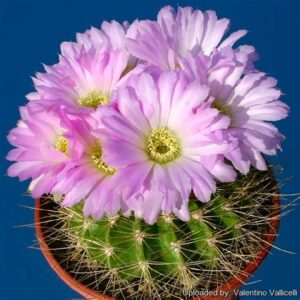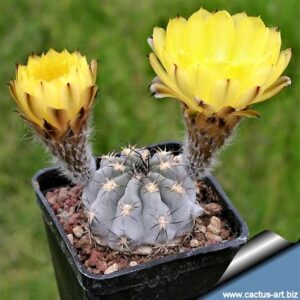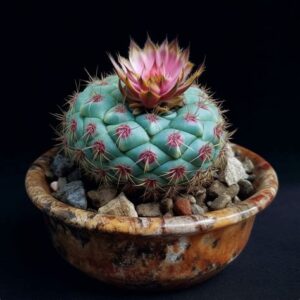Acanthocalycium glaucum is a captivating species of cactus that has garnered attention for its unique aesthetics and relatively straightforward care requirements. Commonly known as the glaucous cactus, it exudes a stunning visual appeal with its distinctive form and vibrant flower blooms. While cultivating this extraordinary plant can be immensely rewarding, potential growers often possess specific concerns regarding its care and maintenance. In this article, we will delve into the essential aspects of Acanthocalycium glaucum care to ensure that your cactus thrives and remains healthy.
Understanding the requirements of this plant is crucial for both novice and seasoned gardeners. Key areas of focus include light, watering, soil composition, temperature, and pest management. This comprehensive guide will not only address the common concerns of potential buyers but also provide actionable insights into keeping Acanthocalycium glaucum flourishing.
Beginning our exploration, it is vital to grasp the natural habitat of Acanthocalycium glaucum. Native to the regions of Argentina and Bolivia, this cactus thrives in arid, mountainous terrains where it endures intense sunlight and scarce rainfall. Mimicking these conditions in a home setting is fundamental for optimal growth.
Light Requirements: The Foundation of Healthy Growth
One of the foremost concerns for caring for Acanthocalycium glaucum is understanding its light requirements. This cactus species flourishes under full sunlight, requiring at least six hours of direct sunlight each day. Insufficient light can lead to etiolation, where the cactus stretches in an attempt to reach for more light, resulting in an unsightly appearance.
When positioning your cactus, consider the following:
– Opt for a south or west-facing window where sunlight is most robust.
– If natural light is limited, using full-spectrum grow lights can supplement the necessary exposure.
– Monitor the cactus for signs of sunburn, which can manifest as browning or scalding of the skin. If observed, adjusting its position or using sheer curtains can mitigate the impact of excessive sunlight.
Watering Practices: The Delicate Balance
Watering is another critical aspect of Acanthocalycium glaucum care. While cacti are renowned for their drought resistance, incorrect watering can jeopardize their health. Understanding the plant’s water needs involves recognizing the signs of hydration and dehydration.
When determining a watering schedule, consider these guidelines:
– Water only when the top inch of the soil feels dry. Generally, this translates to a frequency of once every 2-3 weeks during the growing season (spring and summer).
– Use the soaking method by watering the cactus thoroughly until water drains from the bottom of the pot, ensuring the roots are fully saturated. Avoid repeated soaking that can lead to waterlogged soil.
– During the dormant winter months, reduce watering to once a month, as the cactus rests and requires minimal moisture.
Soil Composition: The Unsung Hero of Cactus Care
Soil plays an integral role in the health and vigor of Acanthocalycium glaucum. A well-draining soil blend can prevent root rot and maintain the ideal moisture levels this cactus craves. Conventional potting soil can retain excessive moisture, presenting challenges for cactus care.
To create an optimal soil mix, consider these components:
– A commercial cactus mix, often formulated specifically for these conditions, is a reliable foundation to build upon.
– Enhance drainage by adding perlite or pumice, which encourages airflow and helps maintain the appropriate moisture balance.
– Incorporate coarse sand, which can prevent compaction and contribute to improved drainage around the roots.
Temperature: The Ideal Environment for Growth
Temperature significantly affects the growth and overall well-being of Acanthocalycium glaucum. This cactus exhibits a preference for warm conditions, making it essential to maintain suitable temperatures. Generally, a range of 70°F to 100°F (21°C to 38°C) during the daytime is ideal for growth. Nighttime temperatures should dip slightly, ideally falling between 50°F to 60°F (10°C to 16°C).
Important temperature considerations include:
– Protecting the cactus from cold drafts or sudden temperature fluctuations, which can stress the plant.
– Moving the cactus indoors during winter in colder climates to prevent frost damage.
– In summer, exposure to outdoor conditions can be beneficial. However, monitor direct sunlight exposure, as scorching can occur in extreme heat.
Pest Management: Recognizing and Responding to Threats
Pests can pose a significant threat to the health of Acanthocalycium glaucum. Common invaders include mealybugs, spider mites, and scale insects. Regularly inspecting your cactus for early signs of infestation is crucial for maintaining its vitality.
To effectively manage pests, implement these strategies:
– Keep a close eye on the base and under the pads of the cactus for any signs of pest control issues, such as webbing or sticky residue.
– Use insecticidal soap or neem oil to treat infestations. Apply these treatments in the early morning or late evening to prevent sunburn on the cactus.
– For stubborn infestations, consider manually removing visible pests with a cotton swab dipped in alcohol or soapy water.
Fertilization: Nutrient Boosts for Thriving Cacti
Fertilizing Acanthocalycium glaucum can enhance its growth, especially during the active growing season. Cacti diseases often arise from nutrient accumulation; therefore, it is essential to adopt a balanced approach.
Key fertilization practices include:
– Applying a diluted liquid cactus fertilizer every 4-6 weeks during the spring and summer months.
– Reducing or eliminating fertilization during the fall and winter months, as the plant’s metabolic activity slows.
– Assessing the growth and coloration of your cactus as indicators of the plant’s nutrient levels—vibrant color suggests healthy nutrition, while pale or yellowing pads may indicate the need for supplemental feeding.
Conclusion: Nurturing Your Cactus Companion
Caring for Acanthocalycium glaucum can be a rewarding venture, transforming your indoor or outdoor space into a showcase of succulent beauty. By understanding its light, watering, soil, temperature, and pest management requirements, you can cultivate a thriving and resilient plant that will enhance any environment.
Keeping a close eye on the specific needs of your glaucous cactus will not only ensure its survival but also foster an environment for vibrant growth and flowering. Whether a novice or a seasoned cactus enthusiast, embracing the nuances of Acanthocalycium glaucum care will undoubtedly lead to a flourishing collection.





Leave a Comment